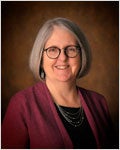Updated ACIP Recommendations on HPV Vaccine
January 2017
| Technically Speaking | |
|
|
 |
|
|
|
|
|
| TECHNICALLY SPEAKING | |
| Updated ACIP Recommendations on HPV Vaccine | |
| Published January 2017 | |
| Information presented in this article may have changed since the original publication date. For the most current immunization recommendations from the Advisory Committee on Immunization Practices, visit www.immunize.org/acip/acip_vax.asp. | |
When should the series be two doses versus three doses?Since 2007, when the first recommendations for use of human papillomavirus (HPV) vaccine were published, CDC’s Advisory Committee on Immunization Practices (ACIP) has recommended a series of three doses, regardless of the age or health status of the recipient. In December 2016, ACIP changed the HPV vaccine recommendations to a two-dose schedule for routine vaccination of 11- and 12-year-olds, as well as for many others, as detailed below. What has changed?ACIP now recommends that healthy adolescents who begin the HPV vaccine series at 11 to 12 years of age, or at any time before the 15th birthday, receive a two-dose series (rather than three doses, as previously recommended).
People who begin the HPV vaccine series on or after the 15th birthday, as well as people who are younger than age 15 who have immunocompromising conditions (such as HIV infection, B-lymphocyte antibody deficiency, or immunosuppressive therapy), should continue to receive a three-dose HPV vaccine series. Updated recommendations are not affected by the HPV vaccine product previously usedThe 9-valent HPV vaccine (9vHPV, Gardasil® 9, Merck) is now the only HPV vaccine being distributed in the U.S.
CDC references
IAC-related resources
Vaccine Education Center resources
Editor’s note: The November issue of Vaccine Update also addressed this topic in the News and Views section and includes information about vaccinating those who already completed HPV2 or HPV4 as does the VEC HPV Q&A and the winter 2016 webinar. |